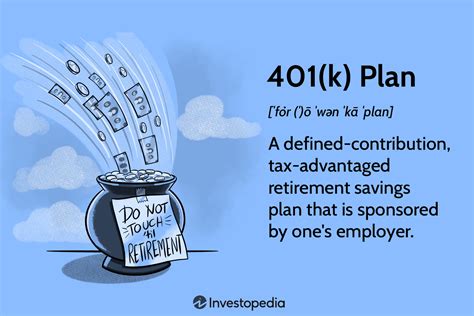
Social Security faces a nearly 50% benefit cut if Congress fails to act, according to financial expert Dave Ramsey, who is urging immediate action to address the looming crisis.
Dave Ramsey is sounding the alarm on the future of Social Security, warning that the program is headed towards a potential 50% cut in benefits if Congress doesn’t intervene promptly. In a recent commentary, Ramsey emphasized the urgency of the situation, highlighting the need for immediate action to secure the retirement income of millions of Americans. His warning comes amidst growing concerns about the long-term solvency of the Social Security system and its ability to meet future obligations.
“Social Security is not funded properly to pay for the promises that have been made,” Ramsey stated. “If Congress does nothing, Social Security benefits will be cut by nearly 50% in the next 10 to 12 years.” This stark forecast underscores the critical need for lawmakers to address the structural issues plaguing the program.
The Social Security Administration (SSA) projects that the Old-Age and Survivors Insurance (OASI) Trust Fund, which pays out retirement benefits, will be depleted by the mid-2030s. Once the trust fund reserves are exhausted, the program will only be able to pay out benefits based on incoming payroll taxes, which are projected to cover only about 80% of promised benefits. This shortfall would necessitate a significant reduction in payments to retirees, impacting their financial security and standard of living.
Ramsey proposes that the solution to the Social Security crisis is multifaceted. He suggests that raising the full retirement age, which is currently 67 for those born in 1960 or later, is one potential avenue. This would effectively reduce the total amount of benefits paid out over a retiree’s lifetime. Another measure he recommends is adjusting the payroll tax rate, either by increasing the percentage or raising the wage cap subject to Social Security taxes. Currently, earnings above $168,600 (in 2024) are not subject to Social Security taxes.
“Raising the retirement age might seem unpopular,” Ramsey acknowledges, “but it’s a necessary conversation. People are living longer, healthier lives, and adjusting the retirement age can help align the system with current demographics.” He also stresses the importance of responsible government spending and fiscal discipline as crucial components of a long-term solution.
The looming cuts to Social Security benefits have far-reaching implications for the economy and the well-being of older Americans. Reduced benefits could lead to increased poverty rates among retirees, forcing many to rely more heavily on public assistance programs and straining state and local resources. It could also dampen consumer spending, as retirees have less disposable income, which could slow economic growth.
The debate over how to fix Social Security is complex and politically charged, with various proposals on the table. Some advocate for increasing payroll taxes, while others favor benefit reductions or a combination of both. There are also proposals to invest Social Security funds in the stock market, which proponents argue could generate higher returns, but opponents warn could expose the system to greater risk. Finding a consensus on the best path forward will require bipartisan cooperation and a willingness to make difficult choices.
Ramsey’s warning serves as a stark reminder of the challenges facing Social Security and the urgent need for action. He emphasizes that addressing the problem now, through a combination of reforms and responsible fiscal management, is essential to ensure that Social Security can continue to provide a vital safety net for future generations of retirees. Failure to act, he cautions, will have dire consequences for millions of Americans who rely on Social Security for their retirement security.
The Social Security program is a cornerstone of the American social safety net, providing retirement, disability, and survivor benefits to millions of people. Established in 1935 during the Great Depression, it was designed to provide a basic level of income security for older Americans and to protect workers and their families from the financial hardships associated with job loss, illness, and death.
Over the years, Social Security has been expanded to cover more workers and provide additional benefits. Today, it is one of the largest government programs in the United States, with more than 66 million people receiving benefits each month. In 2023, Social Security paid out over $1.3 trillion in benefits.
The program is financed primarily through payroll taxes, with employers and employees each paying 6.2% of wages up to a certain limit. Self-employed individuals pay both the employer and employee shares, for a total of 12.4%. These taxes are deposited into two trust funds: the Old-Age and Survivors Insurance (OASI) Trust Fund, which pays out retirement and survivor benefits, and the Disability Insurance (DI) Trust Fund, which pays out disability benefits.
In recent years, Social Security has faced increasing financial challenges due to demographic trends. As the baby boom generation retires, the number of workers paying into the system relative to the number of beneficiaries is declining. This puts pressure on the trust funds, which are projected to be depleted in the coming years.
The Social Security Trustees, who oversee the program, issue an annual report on its financial status. The most recent report, released in 2024, projects that the OASI trust fund will be depleted by 2033. Once the trust fund reserves are exhausted, the program will only be able to pay out benefits based on incoming payroll taxes, which are projected to cover only about 80% of promised benefits.
This shortfall would necessitate a significant reduction in payments to retirees, unless Congress takes action to shore up the system. There are a variety of options that Congress could consider, including raising payroll taxes, reducing benefits, or a combination of both.
Raising payroll taxes would increase the amount of revenue flowing into the system, but it could also discourage work and investment. Reducing benefits would lower the amount of money paid out, but it could also harm retirees and other beneficiaries who rely on Social Security for their income.
Some policymakers have also proposed investing Social Security funds in the stock market, which they argue could generate higher returns. However, this approach would also expose the system to greater risk.
The debate over how to fix Social Security is complex and politically charged. There is no easy solution, and any changes to the program are likely to be controversial. However, it is essential that Congress act soon to address the challenges facing Social Security and ensure that it can continue to provide a vital safety net for future generations of retirees.
Delaying action will only make the problem worse, as the trust funds continue to dwindle and the potential benefit cuts become more severe. The longer Congress waits, the more difficult it will be to find a solution that is both fair and sustainable.
The Social Security crisis is not just a financial problem; it is also a social problem. Millions of Americans rely on Social Security for their retirement security, and any changes to the program could have a significant impact on their lives. It is essential that policymakers consider the needs of all stakeholders when making decisions about the future of Social Security.
The Social Security program is a vital part of the American social safety net, and it is essential that it be preserved for future generations. Congress must act now to address the challenges facing Social Security and ensure that it can continue to provide a vital safety net for future generations of retirees.
Ramsey’s call to action underscores the importance of addressing the Social Security crisis with urgency and resolve. The longer policymakers delay, the more difficult and painful the solutions will become. By working together in a bipartisan manner, Congress can find a way to secure the future of Social Security and protect the retirement security of millions of Americans.
Several factors contribute to Social Security’s financial woes, including increasing life expectancy, declining birth rates, and slower economic growth. As people live longer, they collect Social Security benefits for a longer period of time. At the same time, declining birth rates mean that there are fewer workers paying into the system. Slower economic growth also reduces the amount of payroll taxes collected.
These demographic and economic trends have created a growing gap between the amount of money coming into the system and the amount of money going out. This gap is projected to widen in the coming years, as the baby boom generation continues to retire and the number of workers paying into the system declines further.
To address this challenge, policymakers must consider a range of options, including raising payroll taxes, reducing benefits, and encouraging economic growth. Each of these options has its own advantages and disadvantages, and the best approach will likely involve a combination of different measures.
Raising payroll taxes would increase the amount of revenue flowing into the system, but it could also discourage work and investment. Some economists argue that higher payroll taxes could reduce employment and slow economic growth. Others argue that the impact would be minimal, especially if the tax increase is phased in gradually.
Reducing benefits would lower the amount of money paid out, but it could also harm retirees and other beneficiaries who rely on Social Security for their income. There are a variety of ways to reduce benefits, including raising the retirement age, reducing cost-of-living adjustments (COLAs), and means-testing benefits.
Raising the retirement age would reduce the total amount of benefits paid out over a retiree’s lifetime, but it could also force people to work longer before they can retire. This could be particularly challenging for those who have physically demanding jobs or who have health problems.
Reducing COLAs would slow the growth of benefits over time, but it could also erode the purchasing power of retirees’ income. COLAs are designed to protect retirees from inflation, and reducing them could make it more difficult for retirees to maintain their standard of living.
Means-testing benefits would reduce benefits for those with higher incomes, but it could also discourage saving and create a disincentive to work. Means-testing could also be complex and costly to administer.
Encouraging economic growth would increase the amount of payroll taxes collected, but it is not a guaranteed solution. Economic growth is influenced by a variety of factors, and policymakers cannot simply legislate it into existence. However, there are a number of policies that could help to promote economic growth, such as investing in education and infrastructure, reducing regulations, and promoting free trade.
Ultimately, the solution to the Social Security crisis will require a combination of different measures. There is no easy answer, and any changes to the program are likely to be controversial. However, it is essential that policymakers act soon to address the challenges facing Social Security and ensure that it can continue to provide a vital safety net for future generations of retirees.
The consequences of inaction are dire. If Congress fails to act, Social Security benefits will be cut by nearly 50% in the next 10 to 12 years. This would have a devastating impact on millions of retirees and other beneficiaries who rely on Social Security for their income.
Reduced benefits could lead to increased poverty rates among retirees, forcing many to rely more heavily on public assistance programs. It could also dampen consumer spending, as retirees have less disposable income. This could slow economic growth and lead to job losses.
The Social Security crisis is not just a financial problem; it is also a moral problem. Social Security is a promise that we have made to our workers and their families. We have promised them that they will have a secure retirement after a lifetime of hard work. We must keep that promise.
Congress must act now to address the challenges facing Social Security and ensure that it can continue to provide a vital safety net for future generations of retirees. The future of Social Security depends on it.
In addition to raising the retirement age and adjusting the payroll tax rate, there are other potential solutions to the Social Security crisis that deserve consideration. One option is to increase the number of workers paying into the system by reforming immigration laws. Allowing more immigrants to come to the United States and work legally would increase the pool of payroll tax contributors, helping to shore up the system’s finances.
Another option is to invest a portion of Social Security funds in a diversified portfolio of stocks and bonds. This could potentially generate higher returns than the current investments in U.S. Treasury securities, but it would also expose the system to greater risk. Proponents of this approach argue that the potential benefits outweigh the risks, while opponents worry about the possibility of losses that could further exacerbate the system’s financial problems.
A third option is to gradually increase the full retirement age to 70. This would further reduce the total amount of benefits paid out over a retiree’s lifetime, but it would also require people to work longer before they can retire. This could be a particularly difficult adjustment for those who have physically demanding jobs or who have health problems.
A fourth option is to means-test Social Security benefits, meaning that benefits would be reduced or eliminated for those with higher incomes. Proponents of this approach argue that it would target benefits to those who need them most, while opponents worry that it could create a disincentive to save and work.
A fifth option is to change the way that Social Security benefits are calculated. Currently, benefits are based on a worker’s average lifetime earnings. One proposal is to change the formula to give more weight to a worker’s highest earnings years, which would result in higher benefits for many retirees. However, this would also increase the cost of the system.
Ultimately, the solution to the Social Security crisis will require a combination of different measures. There is no easy answer, and any changes to the program are likely to be controversial. However, it is essential that policymakers act soon to address the challenges facing Social Security and ensure that it can continue to provide a vital safety net for future generations of retirees. The future of Social Security depends on it.
The debate over Social Security reform is often framed as a choice between raising taxes and cutting benefits. However, there are other options that should be considered. One is to focus on promoting economic growth, which would increase the amount of payroll taxes collected. Another is to reduce government spending in other areas, which would free up resources to shore up Social Security.
A strong economy is essential to the long-term health of Social Security. When the economy is growing, more people are employed and paying taxes. This increases the amount of revenue flowing into the Social Security system.
There are a number of policies that can help to promote economic growth, such as investing in education and infrastructure, reducing regulations, and promoting free trade. These policies would not only benefit Social Security but also the economy as a whole.
Reducing government spending in other areas would also free up resources to shore up Social Security. There are many areas where government spending could be reduced, such as defense, foreign aid, and entitlement programs.
Making these cuts would be difficult, but it is essential to get our fiscal house in order. By reducing government spending, we can free up resources to shore up Social Security and other important programs.
The Social Security crisis is a serious challenge, but it is not insurmountable. By working together, we can find a solution that is both fair and sustainable. The future of Social Security depends on it.
Frequently Asked Questions (FAQs) About Social Security’s Future
1. What is the main concern about Social Security right now?
The primary concern is the projected depletion of the Social Security Trust Funds. The Social Security Administration projects that the Old-Age and Survivors Insurance (OASI) Trust Fund, which pays retirement benefits, will be unable to pay full benefits by the mid-2030s. Once the trust fund reserves are exhausted, the program will only be able to pay out benefits based on incoming payroll taxes, which are projected to cover only about 80% of promised benefits. This means retirees could face a substantial cut in their payments if Congress does not act.
2. What does Dave Ramsey suggest as a solution to the Social Security shortfall?
Dave Ramsey advocates for a multi-pronged approach, including raising the full retirement age, adjusting the payroll tax rate (either the percentage or the wage cap), and responsible government spending. He believes that these measures, taken together, can help ensure the long-term solvency of Social Security.
3. Why is the Social Security system facing financial challenges?
Several factors contribute to the financial challenges. Firstly, increasing life expectancy means that retirees are collecting benefits for a longer period. Secondly, declining birth rates mean that there are fewer workers paying into the system relative to the number of beneficiaries. Finally, slower economic growth can reduce the amount of payroll taxes collected, further straining the system’s finances.
4. What are the potential consequences if Congress fails to address the Social Security issue?
If Congress does not act, Social Security benefits could be cut by nearly 50% in the next decade or so. This would have a devastating impact on millions of retirees who rely on Social Security as a primary source of income. Reduced benefits could lead to increased poverty rates among older Americans, force many to delay retirement, and dampen consumer spending, negatively impacting the economy.
5. What are some other proposed solutions beyond those mentioned by Dave Ramsey?
Other proposed solutions include:
- Immigration Reform: Increasing the number of legal workers contributing to the payroll tax base.
- Investing in Stocks and Bonds: Investing a portion of Social Security funds in a diversified portfolio of stocks and bonds to potentially generate higher returns.
- Means-Testing Benefits: Reducing or eliminating benefits for higher-income individuals.
- Changing Benefit Calculation Formulas: Adjusting the formula used to calculate benefits, potentially giving more weight to a worker’s highest earnings years.
- Reducing Government Spending: Reducing spending in other areas to free up resources for Social Security.
The Social Security system is a vital part of the American social safety net, providing retirement, disability, and survivor benefits to millions of people. Its sustainability is crucial for the financial security of current and future generations. The debate over how to ensure its long-term solvency is complex and politically charged, but it is a debate that must be had, and solutions must be found to ensure that Social Security can continue to fulfill its vital role.









